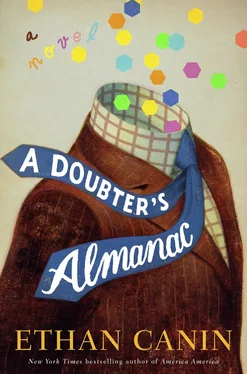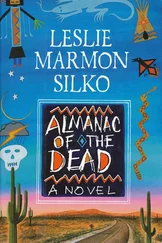Teaching is a noble profession that way. You’re given the opportunity to intervene.
But just in case you think of me in any other way as noble, I should also say that before I became a teacher I first became rich. Moderately rich by the standards of my former field, perhaps, which was statistical arbitrage; but extravagantly rich by the standards of, say, a doctor or a lawyer (and obscenely rich by those of, say, a teacher). Certainly I was already an outlier’s outlier, considering the scant number of years I’d been alive at the time I retired from Physico Partners Capital Management, at an age when plenty of other young men are still carrying coffee upstairs to their bosses. Physico was a hedge fund. PPCM, LLC. For close to a decade, I’d been the mild-mannered wunderkind on their high-frequency trading desk, up there on the top floor of 40 Wall Street (once the tallest building in the world, I should add). I’d started in the days when high-frequency trading was still something of a secret, at least from the public. At Physico, I was set up in my own password-locked execution room, where, in return for a rigorously excised take of four-and-a-half points against the net — which, not including my generally staggering bonus, already gave me a payday of a little more than a hundred times what my father earned in a year — I sat at a brilliantly lit desk twelve hours a day, chasing the spread on just about every species of financial instrument then known to man. I chased it on the on-the-run bond issue across all the international exchanges; I chased it on deliverable corn on the CME; I chased it on three-point arbitrage in the Singapore currency markets. Or, to be more accurate, I chased the shadow of that spread. Didn’t matter what the underlier was, my specialty was the derivative, which fluttered around the thing itself like the wind around a truck, full of gusts and eddies. That’s what I did: I figured out which gusts and eddies were predictable. When I found one, we fed on it. That’s it. It was all just mathematics. As the great Fischer Black liked to say, the markets need noise. We weren’t taking positions in L’eggs stockings or GE for the long hold; it didn’t matter if we were trading on the open exchanges or in the dark pools; it didn’t even matter if we were shorting the very same securities that we had our clients long on; we were just plucking the data points from a proprietary set of statistical curves and taking them to the bank. And it was my set of statistical curves.
In those days, I wrote just about every algo that Physico ever used. I had put Fischer Black, Eugene Fama, and Robert Merton into a blender and made one big patent-green smoothie on which all of us were hungrily slurping. (During my years there, by the way, our Sharpe ratio never budged from the stratosphere: we were inching our way toward the microsecond-scaled, end-to-end market data processing that, by the end of my era, was supporting every Tom-Dick-and-Harry trader with a Ph.D. in mathematics. But when I started out, the whole thing was new, and we all felt like pioneers .) By the time I retired, the only moral principle to which I still hewed was to never stay on a trade for longer than it took the electron to make the single expository round-trip that gave us the clue we needed. In everything we ever did, we stayed a few milliseconds ahead of the tape.
I’d started at seventeen. Five days a week, while other kids were struggling with their trigonometry homework, I was under my row of broad-spectrum fluorescent lamps, following the sun around the globe, from New York to London to Moscow to Tokyo to Los Angeles. In front of me was a nine-panel, semi-hexagonal, superbright CRT display that winked the ask and offer in various accelerated colors of warning, like the dashboard on a space vehicle preparing for reentry. The computer would do the math for any of the traders, of course — although, in deference to my father, I should say it would do the computation —but it certainly helped that I was the one who’d programmed it. It also helped that I, when you took into account the moment the other traders required to glance from one screen to the next, could do the math faster than the computer.
Yes — for a decade, I was Earl Biettermann.
When I eventually did quit Physico (before it met its unkind fate), the atmosphere I reentered was the normal one. On the day I stepped out of my charcoal suit for the very last time, I wasn’t even thirty years old and I’d already made enough money to either retire or spend the rest of my life chasing a truly great fortune. But the thing was, I wanted it all to disappear. I wanted to start over at everything — and so did my wife — as far from that life as we could find.
Lasserville, New York, was where we ended up. George Westinghouse Senior High School, where both of us are now on the payroll.
Audra does remedial reading and writing, part-time, and I do math, full-time. For me it’s five classes a day, homeroom, lunch, and two free periods, in which I usually tutor or grade homework. I also do boys’ cross-country, Math Club, and Curriculum Committee. For Audra, it’s two classes, three days a week, plus PTA liaison and tennis team in the spring.
Go, Wildcats!
We keep busy. She’s on the town Greenery Committee and I’m an assistant leader for the Cub Scouts. She’s a great cook, and I’m a decent one. She does the bills, and I clean the kitchen. (I like to.) We have a girl, Emmy, and a boy, Niels, both still in elementary school, both already adept at the Andret family skill. Emmy, especially.
We don’t discourage it. But we do try to find other things for them to do.
—
NOT LONG AGO, I helped lead the Cub Scout pack on a hike near here. Niels is the scout. But I always take Emmy along, too, even though she’s the only girl. The Brownies in our area don’t do the kinds of things she enjoys, like taking long hikes through wallows of mud.
We went to a place called Middleton Caves, a chain of narrow caverns that descend into a single mammoth chamber fifty feet into the earth. There, the scouts can stand together behind a metal fence and stare openmouthed while I shine my cave light on paintings made by the Haudenosaunee Indians, a thousand years before any of us were born. An Art Institute of Chicago carved out of rock. The cave itself is difficult to find, and the entrance can only be reached on a winding three-mile hike from the parking lot. It’s been raining pretty steadily here lately, and on the morning we left, the ground was making sucking noises where we stepped. Before we’d gone a hundred yards the mud had pulled a boot right off the foot of one of the younger kids; but Bill Granting, our scoutmaster, isn’t the type to cancel an outing. I succeeded in getting the boot back onto the kid’s foot, and then we set off again.
The trail that morning was crossed by brooks and standing puddles of muddy water that rippled with larvae. It was late spring, and the gnats and mosquitoes had already hatched. The foliage was a jungle. The terrain around Lasserville is hilly and the forest hardly varies, so it can be surprisingly difficult to track. There aren’t many spots where a hiker can gain a vantage, and there’s no great river to fix the directions. It’s not dangerous land — if you walk long enough you’ll eventually reach a parking lot — but even so, people do get lost. We walked for a good half hour, and then our scoutmaster made a wrong turn. The pack followed him. I intended to follow myself, from my position at the back of the line, even though I knew he’d made a mistake. Niels skipped happily along and disappeared around the bend; but when Emmy reached the place where the other kids had taken the wrong turn, she stopped and looked back at me. She’d recently turned nine. She and I had glanced at a map that morning, just briefly, but I knew what she was thinking. I pretended not to. I waved her on, and all the rest of us followed. Mr. Granting led us down the path that Emmy and I both knew would lead us in the wrong direction.
Читать дальше












